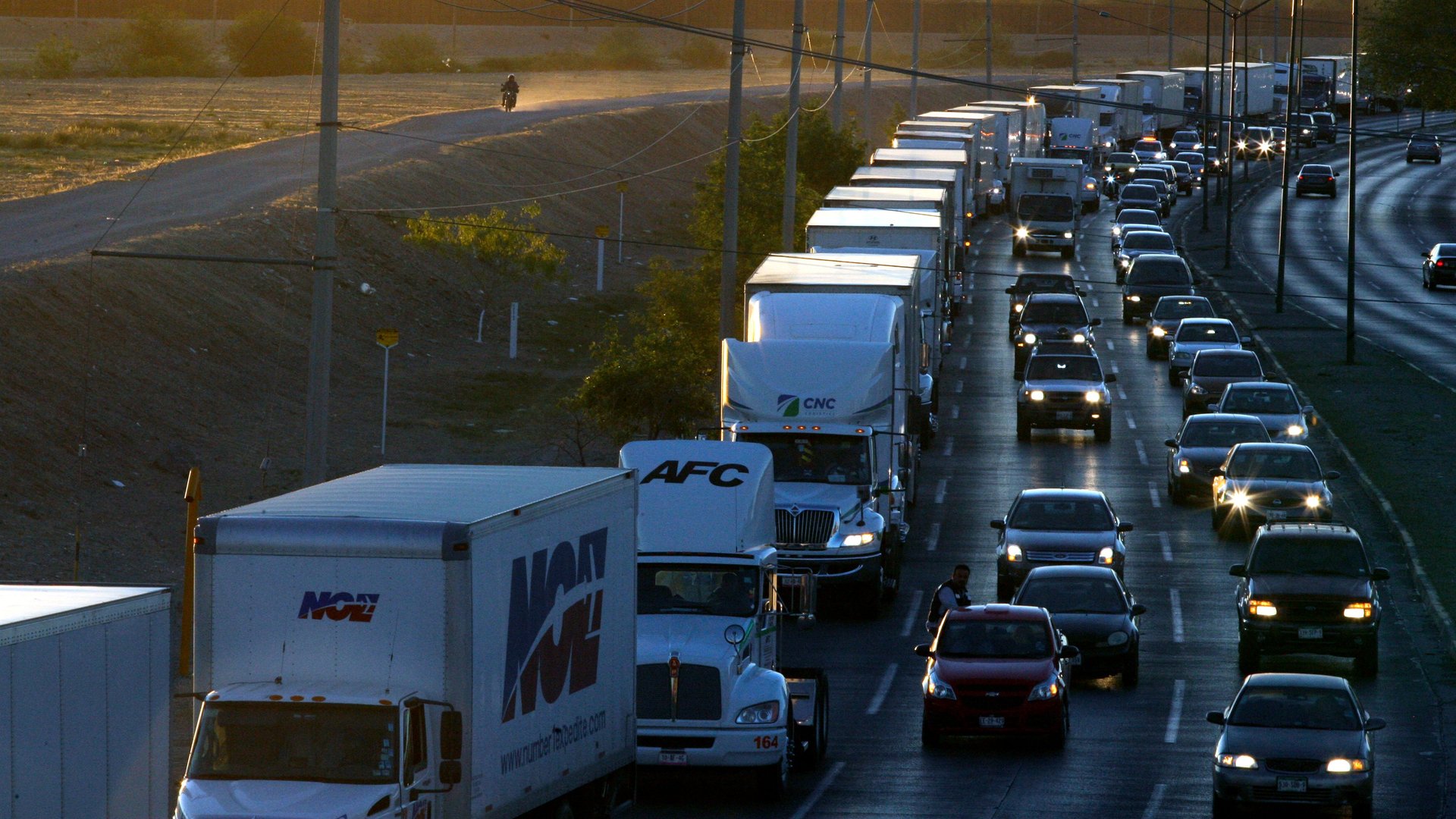How the USMCA sets the stage for the future of trade
The last time a US president signed on to a major trade agreement—in 2016, it was Barack Obama and the Trans-Pacific Partnership deal with 11 Pacific Rim nations—politicians from both the Republican and Democratic parties soon rejected it.


The last time a US president signed on to a major trade agreement—in 2016, it was Barack Obama and the Trans-Pacific Partnership deal with 11 Pacific Rim nations—politicians from both the Republican and Democratic parties soon rejected it.
Today, The US-Mexico-Canada Agreement seems set to sail through a divided Congress after Democrats forced additional changes into the deal to replace the North American Free Trade Agreement.
Are there lessons here for crafting future free trade agreements with Europe or China?
“I don’t know what the lesson here is in getting a free trade agreement passed, because president Trump did not,” says Mary Lovely, a Syracuse University economist and senior fellow at the Peterson Institute for International Economics. “One way to get a trade agreement passed is just to throw out free trade.”
The new name does that quite literally, but the substantial changes are smaller. The .35% increase in US economic production that a key government analysis (pdf) expects is less than the half-percentage point reduction provided by Boeing’s decision to temporarily shut down production of the 737 Max, at least as forecast by Wall Street.
Lovely and her colleagues quibble with the International Trade Commission, which produced the analysis. They expect the deal will actually slow US economic growth a tiny amount, since they are dubious of the ITC’s assumption that the deal will increase investment by eliminating uncertainty about future rules.
Focus on workers
However, the deal has won over Democrats and the AFL-CIO, the country’s largest labor union (which, importantly, represents American autoworkers).
A key reason are protections for the US auto and steel industries. These come in the form of requirements to use more components, in particular steel, produced in North America. That might lead to more investment in production in the US—or to more jobs moving overseas, since US auto tariffs outside of the USMCA will remain at a relatively low 2.5%. (That’s another reason analysts don’t expect major changes.)
The ITC expects that these new rules will actually increase auto prices in the US, but also increase the number of jobs in parts manufacturing. There may be an analogy between trade protections and minimum wage laws: Both may hinder productivity while also benefitting workers overall. But economists fret that more expensive US cars will be less competitive on the world market.
That’s not to say labor loves the deal: The Economic Policy Institute, a union-backed think tank, called USMCA “weak tea at best.”
The deal also has a passel of new labor protections for Mexican workers, who earn the lowest wages and have the least protection among the three nations in the deal. These include a $16 wage requirement for certain jobs, more protection for independent unions, and new labor inspections.
Alvaro Santos, a Georgetown Law professor who advised Mexican negotiators in 2018, is skeptical that these provisions will have much immediate impact on the US economy, but says they may prove useful in the long term in pressing the Mexican government to improve its workers’ lot.
Lose the corporate give-aways
For Democrats, the political difference is also in the treatment of multinational corporations. A common criticism of free-trade deals is that they are often used by corporations as back-door routes to win political priorities that aren’t really about free trade.
The TPP failed in part because US negotiators wanted to make America’s over-the-top protections for the pharmaceutical industry a global standard. Influential Republican senator Orrin Hatch insisted on the provisions, which rankled progressive Democrats and trade counterparts alike. USMCA doesn’t attempt to force other countries to adopt these protections.
Another controversial provision allowed companies to challenge new laws in private arbitration. Called Investor State Dispute Settlement (ISDS), it is intended to protect foreign companies from unlawful expropriation, and some developing economies saw the provisions as important to attracting foreign investment. But ISDS has been abused, including by cigarette companies to battle public health regulations. Rather than enshrine it, the new deal largely walks back ISDS provisions.
What’s next?
None of these changes are looked upon with favor by the free-trade community. One reason they were inked is that president Donald Trump and his chief trade negotiator, Robert Lighthizer, take a distinctly nationalistic view of trade, seeking immediate gains for the US rather than a long-term system of unfettered commerce.
Many Republicans are just glad to see the basic structures of the major regional trade deal remain in place, given Trump’s repeated threats to pull out of NAFTA entirely. Trump’s ability to cow his party into voting for a protectionist trade deal shouldn’t surprise, but it’s a key reason USMCA is expected to be enacted. Republicans may be ruing their decision to abandon the TPP under Obama.
Today, against the backdrop of ongoing trade tensions with, well, everyone, but especially China, this does offer some hope to skeptical foreign interlocutors that the Trump administration can make a deal on behalf of the United States—assuming he doesn’t blow it up with another tariff tantrum after it is finalized. And Lovely hopes that the new labor provisions are seen as effective and validate the AFL-CIO’s endorsement, which could increase domestic confidence in future global deals.
While this deal isn’t directly connected to the US tariff standoff with China, it may offer hints about the long-term future of the economic relationship between the two countries. Many American strategists still view joining the existing TPP (or the CPTPP, as it’s now called) as the best way to create an economic bulwark against Chinese expansion, backing regional allies and setting the terms of global trade. A future president may need to learn from USMCA about how to make that happen.